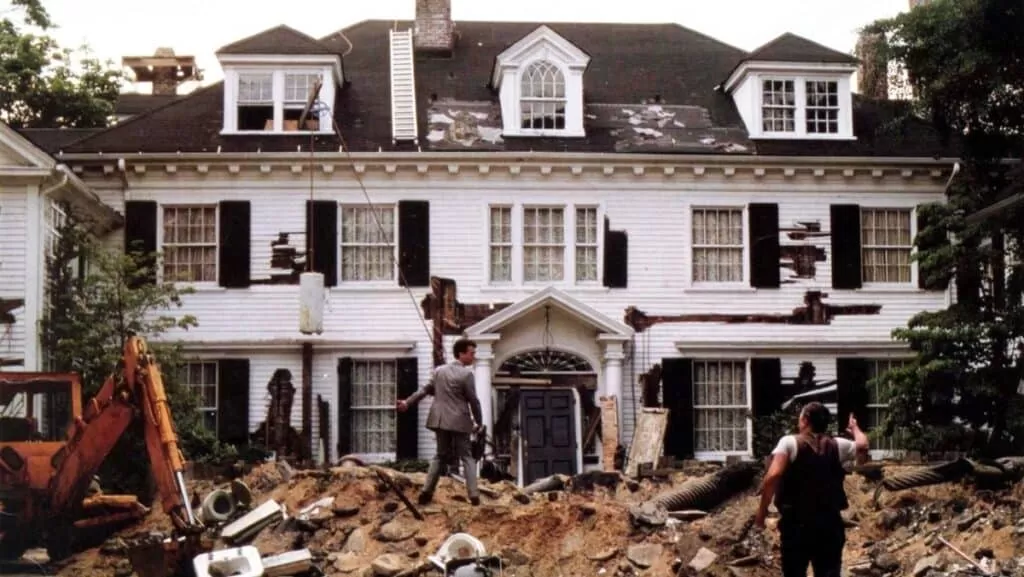
Remodel construction mistakes made during major home remodeling projects are common for inexperienced homeowners.
We will discuss 10 of the most common remodeling construction mistakes to avoid during the preconstruction phase and remodeling phases.
It is all too common for homeowners to leap before they look when it comes to major home remodeling projects. They let their desire for a new abode push them for results without preparing for the journey.
It is also quite frequent that owners hiring professional guidance can fall victim to project disappointment from unanticipated design errors. Remodeling projects come in many sizes and investment amounts.
This is one of the best arguments for the owner to have professionals surrounding them during the remodel journey.
Understanding why the most common remodeling construction mistakes occur can save you a great deal of aggravation and money.
Not Preparing Remodel Design Documents
This may sound obvious, but it is all too common for an owner to begin a significant project without detailed plans that include dimensions, product samples, and specifications.
Even the most accomplished home renovation contractor understands the importance of a complete set of construction documents.
Without a set of detailed plans, the owner is accepting a much greater chance of experiencing a significant misunderstanding between their vision and their hired professionals.
Construction documents include engineering plans for structural components, selection allowances and construction budget, and a complete set of drawings with wall/room profile sections.
Preparing for major remodeling construction is also about preparing the owner’s family with a schedule of events that will impact their lives while undergoing remodeling.
Those that choose to live in their home during a remodel will require special accommodations to make the experience tolerant.
Understanding the remodeling design process and making the most of it can be very beneficial in preparing an organized house remodel. Watch our video.
Selecting the Lowest Price or Bid
This is a common trap that many homeowners fall victim to the consequences of trying to save money.
In most cases, these situations result in the owner paying far more than they would have paid by going with the higher price or bid amount.
The low bid does not mean that it is always a low bid. The scope of work could be different or incomplete, product specs could be much greater and the general conditions could also be different.
These situations are not always clear to the homeowner when making their buying decision.
Although there are many signs that indicate that greater research is warranted before the owner pulls the trigger on the purchase.
The most apparent sign is when one of your bidders is more the 10% outside of the price range for a well-defined scope of work.
This often suggests that they have made a mistake or intentionally omitted a significant scope of work.
If there is not a well-defined scope of work the bid discrepancies can climb as high as 25% differences.
This seldom means that this is the best contractor for your project, but rather demand for greater research is required to determine the differences.
Too Thin of Construction Budget
An unrealistic or too thin of a remodeling construction budget does not mean your project is a no-go, but rather indicates that it is time to value engineer your project and reduce the magnitude of cost.
Progressing forward without sufficient funds to complete a project can end very badly for all parties. This can result in the owner stealing from one budget line item to pay for another.
Identifying different levels of product quality and materials that require specially skilled labor can often be helpful in getting your investment budget back in line.
Understanding alternative product options is key to seeking a cost-effective budget solution.
Initially planning some contingency in the primary remodel budget can also help avoid the need to redesign to fit your budget.
If the budget needs to be reduced, you need to re-evaluate the remodel design.
Beginning Remodeling Prematurely
Owners need to resist the urge to begin their remodeling construction project before they are prepared.
This means that the building design is complete, product selections made and a detailed budget is complete.
The greater number of loose ends that a project has, the more likely it will become a problem as the project progresses.
This happens for a variety of reasons, first selecting a product after the framing has been built can create a need for a change order to reframe to specific dimensions.
A second example is selecting a product that requires specific plumbing or electrical rough specifications.
Without the product specs on hand when they are roughing in, the odds are that they will be required to be changed after the fact.
Other examples of beginning renovations too early are starting before the plan remodel design is complete or permits are issued.
Selecting items that require a long lead time to receive can also create issues with construction schedules. Beginning before financing is complete will also be a problem.
DIY General Contractor
Do It Yourself general contractors is a complete subject matter within itself and requires a mention.
General contracting is a challenging profession for experts, let alone a DIY.
It does not just include remodeling construction contracting hiring a few subcontractors and getting the work done on schedule.
It requires developing the project from remodel design through completion to represent the vision that the owner is imagining through the plans and documents representing the project.
It involves anticipating design issues before they become problems and preparing construction specifications to vet levels of contractor quality.
These types of skills require years of direct experience that comes with making past mistakes.
A DIY will be convinced that they will save money by managing the remodel design and construction themselves, only to find that the stark reality is that it usually will cost more money than if they had used a general contractor.
There is a little substitution for a seasoned remodeling contractor.
Sacrificing Quality
Sacrificing quality is a consequence of improperly cutting costs and taking shortcuts during remodeling construction.
This also results from stretching the budget early in the construction process and settling for less in finishes at the end of a project when it counts the most.
Sacrificing quality can also result from the accidental consequences of making too many changes during remodeling construction.
Construction quality is a blend of product and craftsmanship. One without the other will sacrifice quality.
A master trim carpenter using a generic wood for cabinets will not only appear lacking, but it is a waste of the carpenter’s skill level.
It is similar to using the quality of a talented architect to build a large box-like home design reflecting more square footage and fewer architectural appointments to save money. It is a misdirected effort of a master designer’s talents.
Making Major Changes After Construction Starts
Making major changes well into the remodeling construction process has a negative effect on many fronts of a construction project.
The first is that it slows down the project causing the associated problems with delays.
Secondly, you are in essence repairing newly completed remodeling work.
Thirdly, major changes frustrate all onsite construction personnel. No one enjoys destroying the work that they are proudly creating.
Owners Not Understanding the Home Plan Design
Although this is not the magnitude of a problem that it used to be before the advent of 3D illustrated computer automated drawings, most homeowners have issues with not understanding the architectural drawings.
This is justifiably understood. The architectural drawings are primarily for renovation construction, but it is critical that the owner have a clear idea of what the home or the space will look like when finished before construction.
Not Hiring a General Contractor During Design Stage
Another very common mistake that owners make is waiting to hire their remodel general contractor after they have the home remodeling plans nearly completed.
The conventional thinking is that they will complete the remodeling construction design plans and then let them to qualified general contractors for bid.
This can work well if the home plans and the construction budget are within the expected price range.
Remodeling contractors can be of enormous value while designing a major renovation or a new custom home.
They will work with the home designer on constructability issues as well as provide pricing assurance during the design process.
This will result in a much less need to redesign the complete plans and reduce the lost time and frustration that goes with the redesign.
Hiring a General Contractor That Is Not a Good Fit
Out of all of the mistakes that owners make during a home renovation project, this is by far the easiest to rectify during the remodeling contractor selection process.
Hiring a general contractor is like selecting any other professional like a doctor, accountant, or attorney. It begins with establishing their competency and developing a trust factor with them. But it should go well past that level.
Hiring a general contractor should be a personal decision as well. You are likely to spend anywhere from 3 months to 12 months with this expert on a regular basis.
It also makes sense that you like them as a person. There is a much better chance of the owner enjoying the renovation project if they trust and like their home remodeling contractor.
Conclusion
It is very common for homeowners to make mistakes preparing and executing home remodeling projects.
Hiring an accredited general contractor that specializes in remodeling contracting is a good place to start to avoid disappointing results.
Take your time and think through the details of the design and the functionality that it will provide your use.
Following the proper remodel design process will also reduce your exposure to mistakes during home remodel.












